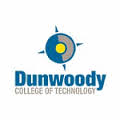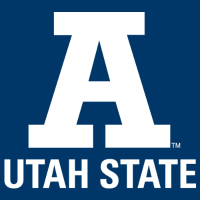What do they do?
Install, inspect, test, maintain, or repair electric gate crossings, signals, signal equipment, track switches, section lines, or intercommunications systems within a railroad system.
Also known as:
Light Rail Signal Technician, Railroad Signal Maintainer, Signal and Communications Maintainer, Signal Inspector, Signal Maintainer, Signal Maintenance Technician, Signal System Testing Maintainer, Signal Technician, Signalman, Train Control Electronic Technician, Train Control Technician
-
6.1%
Change
Select a state to see its job growth rate ranking700Job Openings
Select a state to see its net job growth ranking
-
Southern California Institute of Technology
Anaheim, CA
-
Lincoln Technical Institute-Union
Union, NJ
-
Escuela Tecnica de Electricidad
Ponce, PR
-
Lincoln Technical Institute-Mahwah
Mahwah, NJ
-
Pennco Tech-Bristol
Bristol, PA
Looking for colleges that offer a specific major? Use the College Match Tool to find your best-matched schools and discover your estimated Net Price!
- Doctorate or Professional Degree (<1%)
- Master's degree (1%)
- Bachelor's degree (9%)
- Associate's degree (10%)
- Some college, no degree (27%)
- High school diploma equivalent (39%)
- Less than high school diploma (13%)
People in this career often have these skills:
- Troubleshooting - Determining causes of operating errors and deciding what to do about it.
- Equipment Maintenance - Performing routine maintenance on equipment and determining when and what kind of maintenance is needed.
- Repairing - Repairing machines or systems using the needed tools.
- Quality Control Analysis - Conducting tests and inspections of products, services, or processes to evaluate quality or performance.
- Critical Thinking - Using logic and reasoning to identify the strengths and weaknesses of alternative solutions, conclusions, or approaches to problems.
- Operations Monitoring - Watching gauges, dials, or other indicators to make sure a machine is working properly.
- Equipment Selection - Determining the kind of tools and equipment needed to do a job.
- Complex Problem Solving - Identifying complex problems and reviewing related information to develop and evaluate options and implement solutions.
People in this career often know a lot about:
- Transportation - Knowledge of principles and methods for moving people or goods by air, rail, sea, or road, including the relative costs and benefits.
- Mechanical - Knowledge of machines and tools, including their designs, uses, repair, and maintenance.
- English Language - Knowledge of the structure and content of the English language including the meaning and spelling of words, rules of composition, and grammar.
- Public Safety and Security - Knowledge of relevant equipment, policies, procedures, and strategies to promote effective local, state, or national security operations for the protection of people, data, property, and institutions.
People in this career often have talent in:
- Problem Sensitivity - The ability to tell when something is wrong or is likely to go wrong. It does not involve solving the problem, only recognizing that there is a problem.
- Arm-Hand Steadiness - The ability to keep your hand and arm steady while moving your arm or while holding your arm and hand in one position.
- Control Precision - The ability to quickly and repeatedly adjust the controls of a machine or a vehicle to exact positions.
- Flexibility of Closure - The ability to identify or detect a known pattern (a figure, object, word, or sound) that is hidden in other distracting material.
- Visualization - The ability to imagine how something will look after it is moved around or when its parts are moved or rearranged.
- Manual Dexterity - The ability to quickly move your hand, your hand together with your arm, or your two hands to grasp, manipulate, or assemble objects.
- Finger Dexterity - The ability to make precisely coordinated movements of the fingers of one or both hands to grasp, manipulate, or assemble very small objects.
- Visual Color Discrimination - The ability to match or detect differences between colors, including shades of color and brightness.
- Multilimb Coordination - The ability to coordinate two or more limbs (for example, two arms, two legs, or one leg and one arm) while sitting, standing, or lying down. It does not involve performing the activities while the whole body is in motion.
- Far Vision - The ability to see details at a distance.
People in this career often do these activities:
- Inspect equipment to locate or identify electrical problems.
- Test electrical circuits or components for proper functioning.
- Repair electrical circuits or wiring.
- Test mechanical equipment to ensure proper functioning.
- Repair worn, damaged, or defective mechanical parts.
- Drive trucks or other vehicles to or at work sites.
- Inspect mechanical equipment to locate damage, defects, or wear.
- Maintain work equipment or machinery.
- Adjust the tension of nuts or bolts.
- Replace worn, damaged, or defective mechanical parts.
- Inspect electrical or electronic systems for defects.
- Record information about parts, materials or repair procedures.
- Lubricate equipment to allow proper functioning.
- Clean equipment, parts, or tools to repair or maintain them in good working order.
- Control power supply connections.
This page includes data from:

 Occupation statistics: USDOL U.S. Bureau of Labor Statistics Occupational Employment Statistics
Occupation statistics: USDOL U.S. Bureau of Labor Statistics Occupational Employment Statistics









